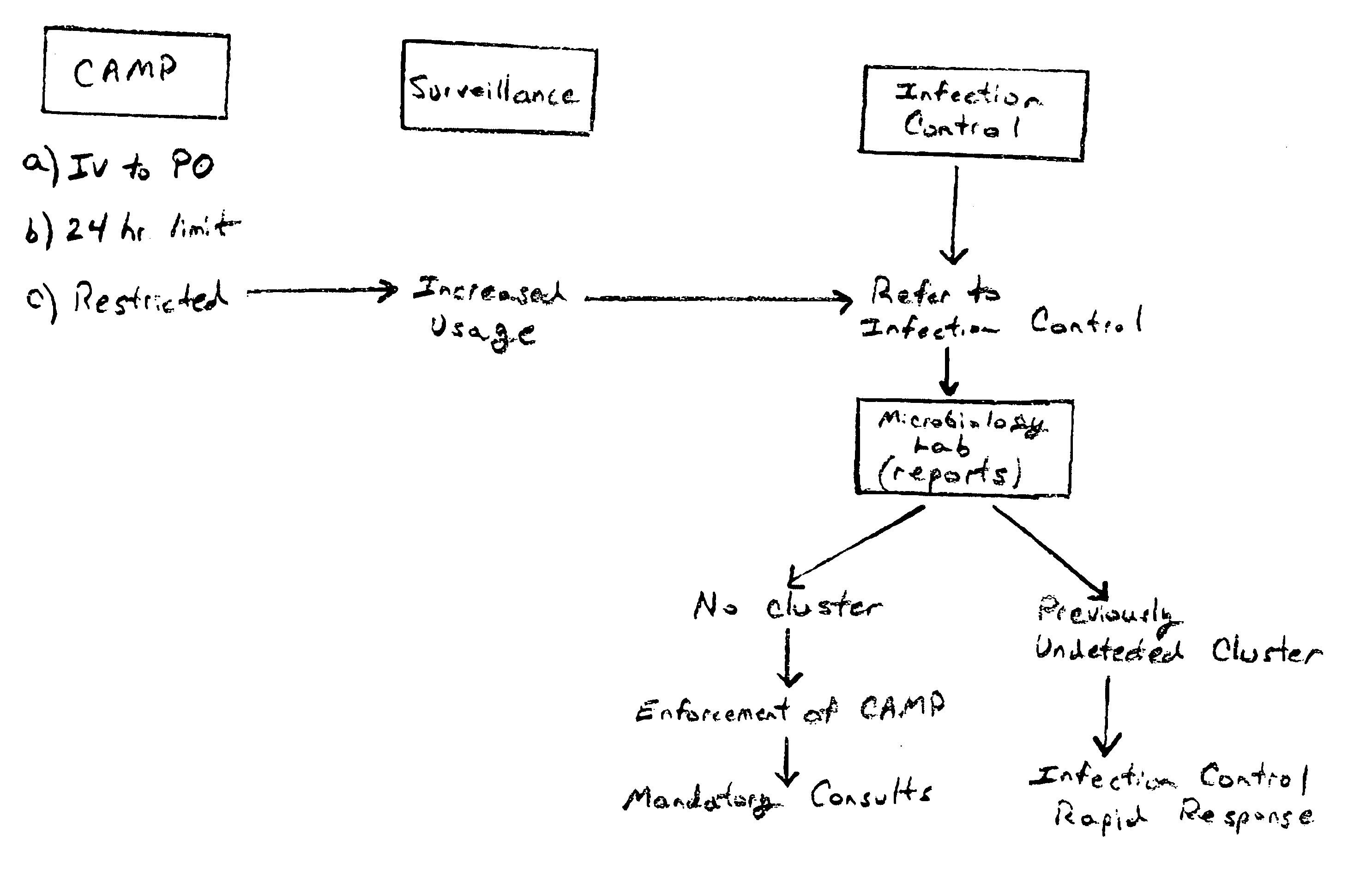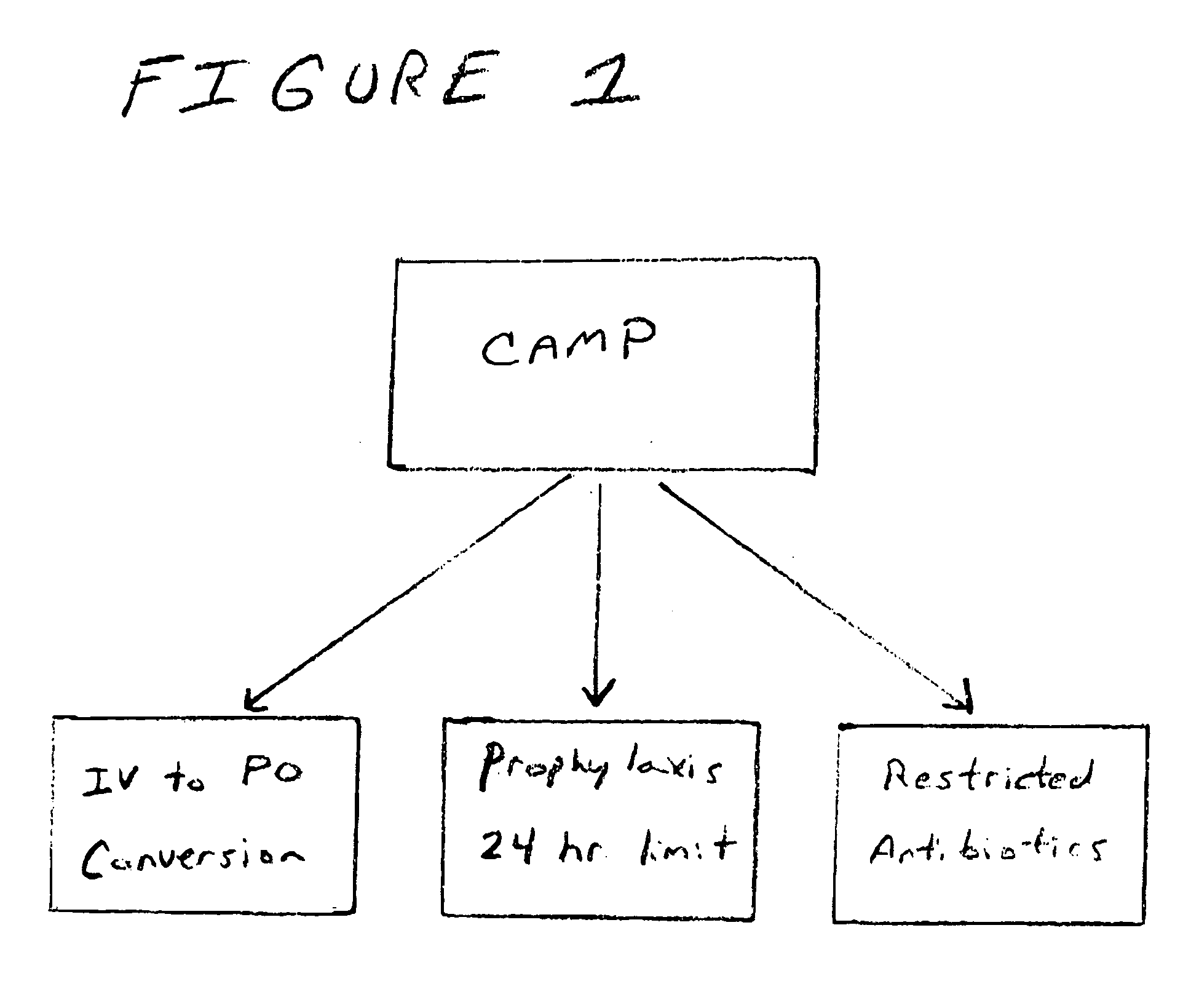Controls for antimicrobial use and infection
a technology of antimicrobial use and infection, applied in the field of management of antimicrobial (antibiotic) therapy, can solve the problems of health care environment now experiencing crisis, and most health care environment (e.g. hospitals) failing to implement effective and/or comprehensive risk management systems
- Summary
- Abstract
- Description
- Claims
- Application Information
AI Technical Summary
Problems solved by technology
Method used
Image
Examples
examples
[0092] Additional advantages and features of the present invention will become apparent from the subsequent examples, taken in conjunction with the prior description and the appended claims, wherein:
[0093] A study was designed and conducted to test the hypothesis that in a hospital, antimicrobial use could be improved via the present inventions described herein. The improvements were envisioned to include reductions in overall antibiotic use, cost savings and decreased antimicrobial resistance.
[0094] Design: interventional study with historical cohort. Three categories of inpatient antibiotic orders were monitored beginning April 2001. Data were analyzed after the first 33 months. Patient outcomes were reviewed during the hospital stay and at readmission if readmission occurred within 30 days.
[0095] Setting: a general community, not-for-profit, 900 bed hospital with residents in medicine, surgery, obstetrics-gynecology, and psychiatry.
[0096] Participants: physicians who ordered ...
PUM
 Login to View More
Login to View More Abstract
Description
Claims
Application Information
 Login to View More
Login to View More - R&D
- Intellectual Property
- Life Sciences
- Materials
- Tech Scout
- Unparalleled Data Quality
- Higher Quality Content
- 60% Fewer Hallucinations
Browse by: Latest US Patents, China's latest patents, Technical Efficacy Thesaurus, Application Domain, Technology Topic, Popular Technical Reports.
© 2025 PatSnap. All rights reserved.Legal|Privacy policy|Modern Slavery Act Transparency Statement|Sitemap|About US| Contact US: help@patsnap.com



